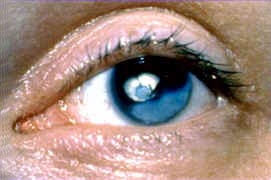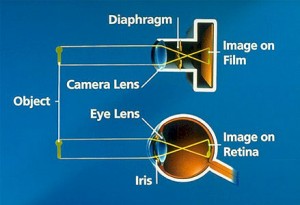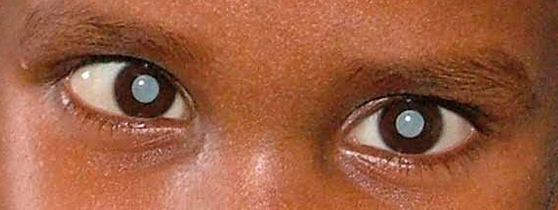White cataracts are blinding cataracts. Virtually 100% of today’s current 18-million impoverished, cataract-blinded have “white cataracts.”
The world’s current 18-million cataract-blinded can see no motions or movements with either eye. They can only detect whether a light is on or off and where the light is coming from, or if it is day or night. They are truly blinded by their cataracts.
 Eighty percent of today’s cataract-blinded live in rural areas of poorer countries. We must take the eye-surgery to them. This requires local and volunteer eye surgeons operating in minimally-equipped rural eye operating rooms. They can have excellent vision restored by removal of the white portion of the cataract, leaving in the eye, the still-clear, thin, outside-portion of the lens, called the “lens capsule,” to hold a new lens implant which gives almost 20/20 vision to 98% of the individuals who undergo this operation. Many of these people claim it is “a miracle” when their vision is restored by today’s micro-surgical cataract operations.
Eighty percent of today’s cataract-blinded live in rural areas of poorer countries. We must take the eye-surgery to them. This requires local and volunteer eye surgeons operating in minimally-equipped rural eye operating rooms. They can have excellent vision restored by removal of the white portion of the cataract, leaving in the eye, the still-clear, thin, outside-portion of the lens, called the “lens capsule,” to hold a new lens implant which gives almost 20/20 vision to 98% of the individuals who undergo this operation. Many of these people claim it is “a miracle” when their vision is restored by today’s micro-surgical cataract operations.
In rich countries, cataracts seldom progress to the white stage but they only blur vision a bit when removed.
Up to ninety-percent of cataract operations done in rich countries are not for white-cataracts but are for blurring cataracts. But the mechanics of the sight-restorative cataract operation are almost the same.
The nucleus and cortex of the cataract are cleanly removed by micro-surgery and replaced by an “IntraOcular Lens.”
After cataract surgery the lens capsule of a blurring cataract can cloud slowly or fast and needs a new clear opening by a laser treatment. But the lens capsules of white cataracts rarely or never cloud because the lens epithelial cells are destroyed by the process of complete (mature) cataract formation in white cataracts. Not many eyes surgeons from rich countries know about this helpful fact concerning white cataracts.
By Robert Welsh, MD; Founder Volunteer Eye-Surgeons’ Association.


 Eighty percent of today’s cataract-blinded live in rural areas of poorer countries. We must take the eye-surgery to them. This requires local and volunteer eye surgeons operating in minimally-equipped rural eye operating rooms. They can have excellent vision restored by removal of the white portion of the cataract, leaving in the eye, the still-clear, thin, outside-portion of the lens, called the “lens capsule,” to hold a new lens implant which gives almost 20/20 vision to 98% of the individuals who undergo this operation. Many of these people claim it is “a miracle” when their vision is restored by today’s micro-surgical cataract operations.
Eighty percent of today’s cataract-blinded live in rural areas of poorer countries. We must take the eye-surgery to them. This requires local and volunteer eye surgeons operating in minimally-equipped rural eye operating rooms. They can have excellent vision restored by removal of the white portion of the cataract, leaving in the eye, the still-clear, thin, outside-portion of the lens, called the “lens capsule,” to hold a new lens implant which gives almost 20/20 vision to 98% of the individuals who undergo this operation. Many of these people claim it is “a miracle” when their vision is restored by today’s micro-surgical cataract operations.